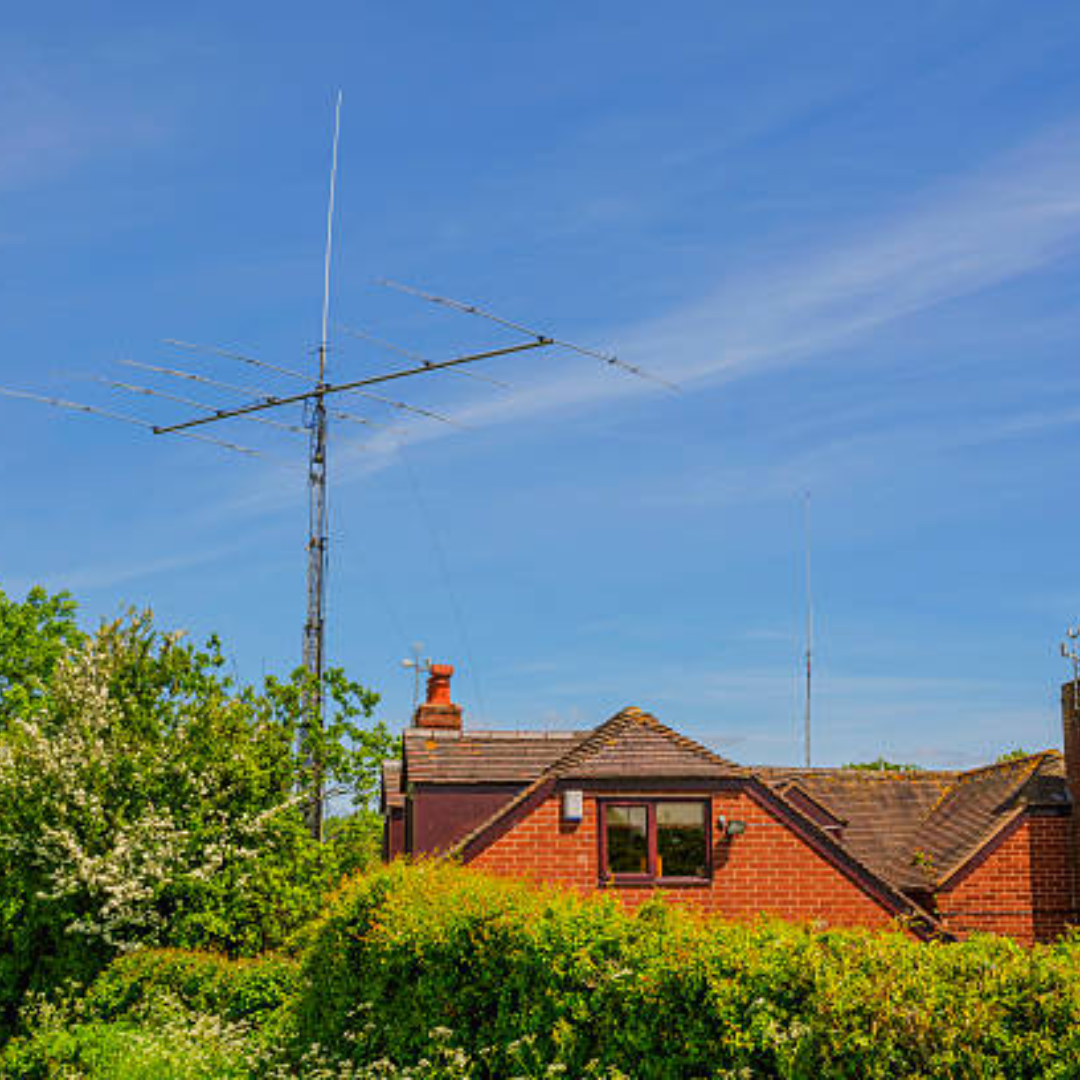Ham radio aerials.
In the modern world, where natural disasters and emergencies can disrupt traditional communication channels, ham radio aerials play a crucial role in ensuring connectivity during such critical times. The ability to reach out for help or communicate vital information could be a matter of life and death in survival situations. This post will discuss the key benefits of utilizing ham radio aerials and how they enhance communication range and reliability during emergencies.
This is a pinnable post. Tap or hover over any image in this post to pin to your Pinterest Boards.
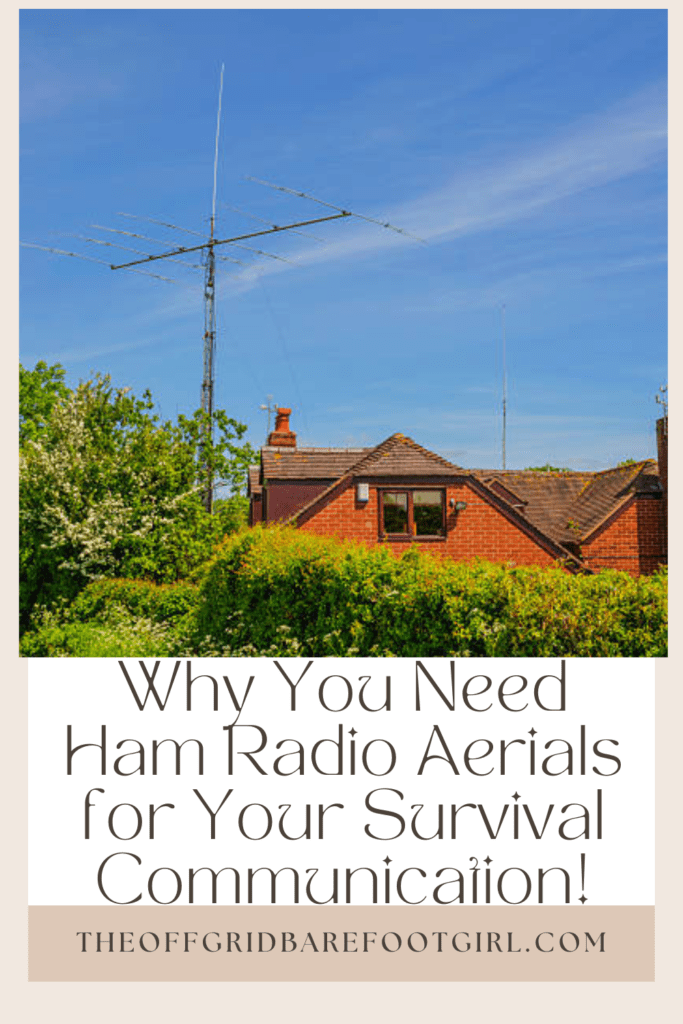
Importance of Ham Radio Aerials for Survival Communication
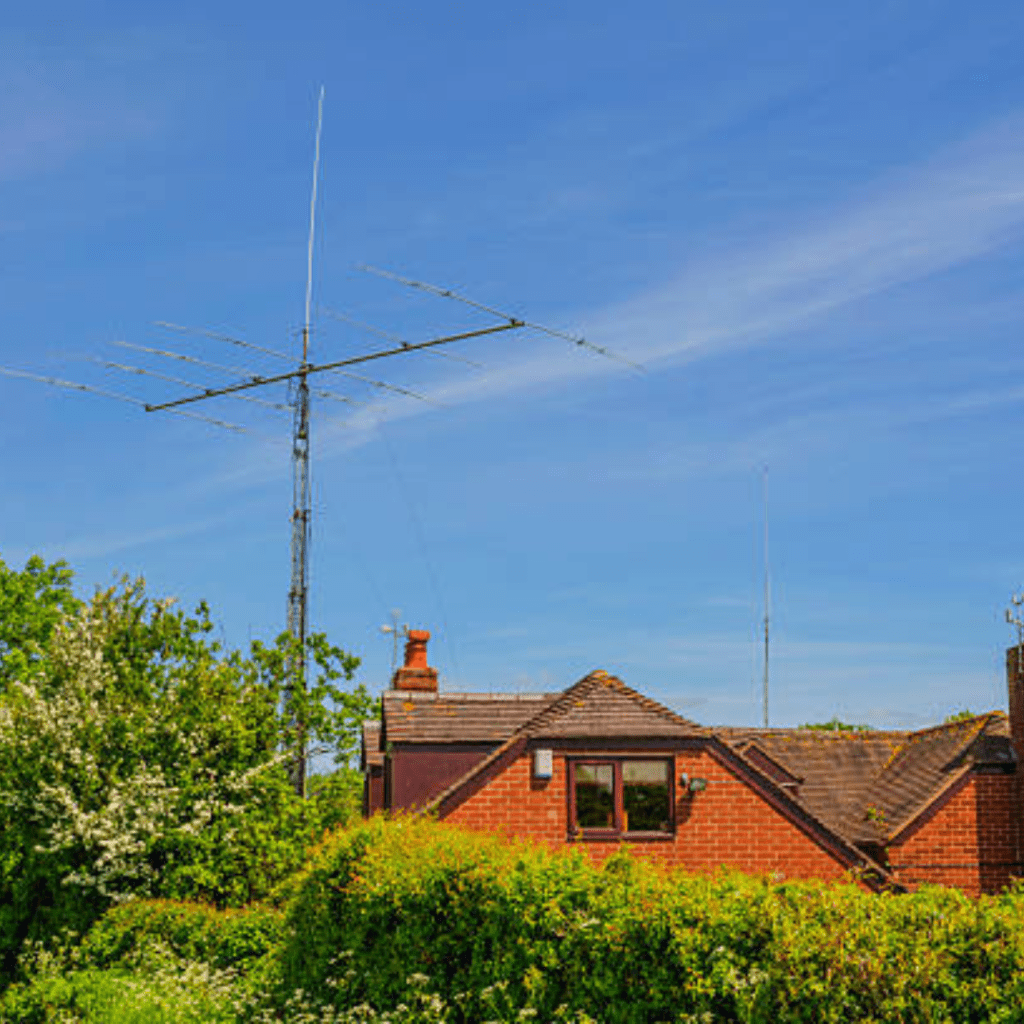
In an age where digital communication dominates, the importance of reliable, independent methods of staying connected cannot be overstated—especially in survival situations. Ham radio aerials, often overlooked by the tech-savvy, are indispensable tools for ensuring robust and far-reaching communication capabilities.
Whether faced with natural disasters, power outages, or other emergencies, these aerials provide a critical lifeline when conventional communication networks fail. By investing in ham radio aerials, you equip yourself with a resilient means of staying informed, coordinating with others, and ultimately enhancing your chances of survival in the face of adversity.
Importance of Ham Radio Aerials for Survival Communication
Key Benefits of Ham Radio Aerials
- Enhanced Signal Reception: Ham radio aerials, also known as antennas, improve the reception of signals which is crucial for clear communication, especially in remote or challenging terrains.
- Increased Transmission Efficiency: Aerials aid in transmitting signals efficiently over long distances, making them essential for reliable communication during emergencies.
- Versatility and Adaptability: Different types of ham radio aerials are available to suit various communication needs, offering versatility in establishing connections in diverse scenarios.
Enhancing Communication Range
- Extended Reach: Ham radio aerials significantly enhance the communication range, allowing operators to connect with others far beyond the limitations of handheld devices.
- Improved Clarity and Signal Strength: By using aerials, operators can achieve clearer and stronger signals, reducing the chances of communication breakdowns in critical situations.
- Overcoming Obstacles: Aerials can help overcome obstacles such as buildings, mountains, or dense vegetation that might obstruct direct communication paths.
Ensuring Reliable Communication in Emergency Situations
- Critical Lifeline: In emergencies like natural disasters or power outages, ham radio aerials provide a reliable communication lifeline when conventional means fail.
- Community Support: Ham radio operators with aerials can assist emergency services and communities by relaying important information or distress signals when other communication channels are disrupted.
- Independence and Self-Sufficiency: Having reliable communication through ham radio aerials empowers individuals to be self-sufficient and maintain contact with essential services or other survivors during crises.
By understanding the key benefits, range enhancement, and reliability assurance that ham radio aerials offer, individuals can grasp the crucial role these antennas play in ensuring effective survival communication in challenging situations.
Becoming a Ham Radio Operator
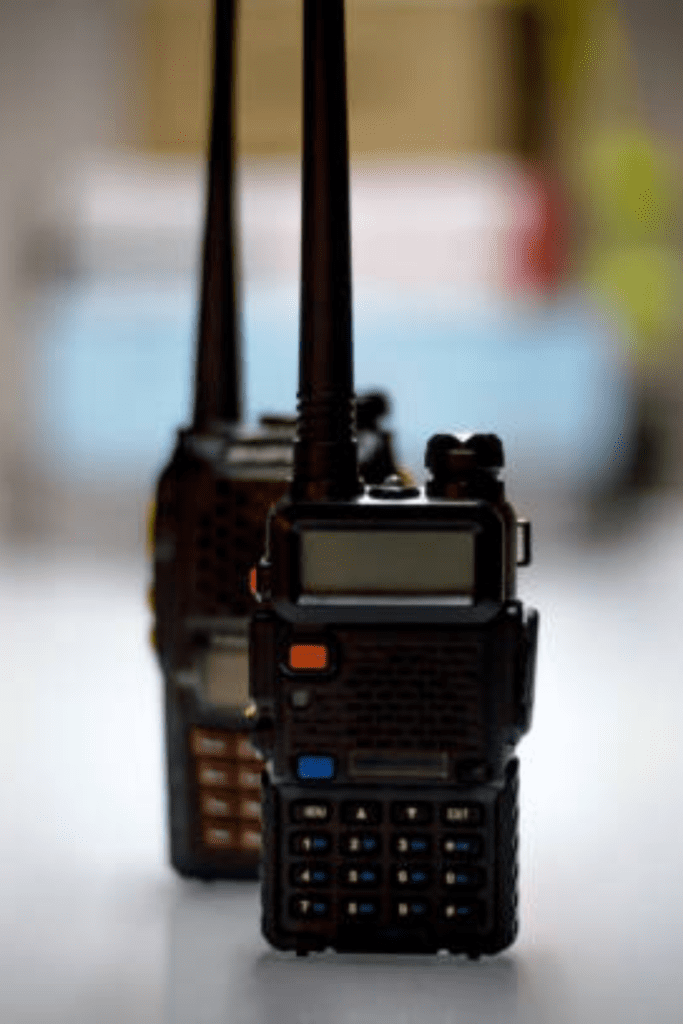
Requirements to Obtain Ham Radio License
To become a licensed Ham radio operator, you need to meet specific requirements set by regulatory authorities. These requirements typically include passing an exam that tests your knowledge of radio regulations, operating practices, and basic electronics. The exam will cover topics like operating procedures, radio wave propagation, and FCC rules.
- Study Material: Obtain study materials, such as books or online resources, to prepare for the exam.
- Exam: Schedule and take the exam at an authorized testing location.
- License Class: Choose the license class you want to obtain – Technician, General, or Amateur Extra, each offering different privileges.
Ace Your Ham Radio Test!

To maximize your ham radio communication potential, it’s crucial not only to have the right equipment, but also to possess the necessary knowledge and skills. If you’re aiming to ace your ham radio test, be sure to read my other post on this topic. In that detailed guide, you’ll find invaluable tips and strategies for studying, understanding the key concepts, and navigating the exam with confidence.
From mastering the technical aspects to familiarizing yourself with the regulations, my comprehensive advice will help you prepare thoroughly and achieve success. With your license in hand, you’ll be ready to fully leverage the power of ham radio aerials for any survival situation.
Crush the Ham Radio Test with This Proven Prep Guide!

Advantages of Being a Licensed Ham Radio Operator
Being a licensed Ham radio operator comes with various benefits that enhance your communication capabilities and legal standing in using radio equipment. Some advantages include access to exclusive frequency bands, participation in emergency communication networks, and the ability to communicate globally using different modes such as voice, data, or Morse code.
- Legal Compliance: Operating within the regulations and avoiding fines or penalties for unlicensed transmission.
- Community Engagement: Joining a community of fellow radio enthusiasts for knowledge sharing and support.
- Personal Growth: Developing technical skills, improving communication abilities, and contributing to public service during emergencies.
Developing Skills for Effective Communication
Effective communication is essential for Ham radio operators to convey messages clearly and ensure proper transmission. Developing skills in radio etiquette, signal processing, and troubleshooting common issues can significantly enhance your communication abilities in various conditions, including emergencies.
- Practice: Regularly practice communicating over the radio to improve clarity and efficiency.
- Emergency Protocols: Learn emergency communication protocols to handle critical situations effectively.
- Continuous Learning: Stay updated on new technologies and communication techniques through training sessions, workshops, and interaction with experienced operators.
Essential Ham Radio Gear for Disaster Communication
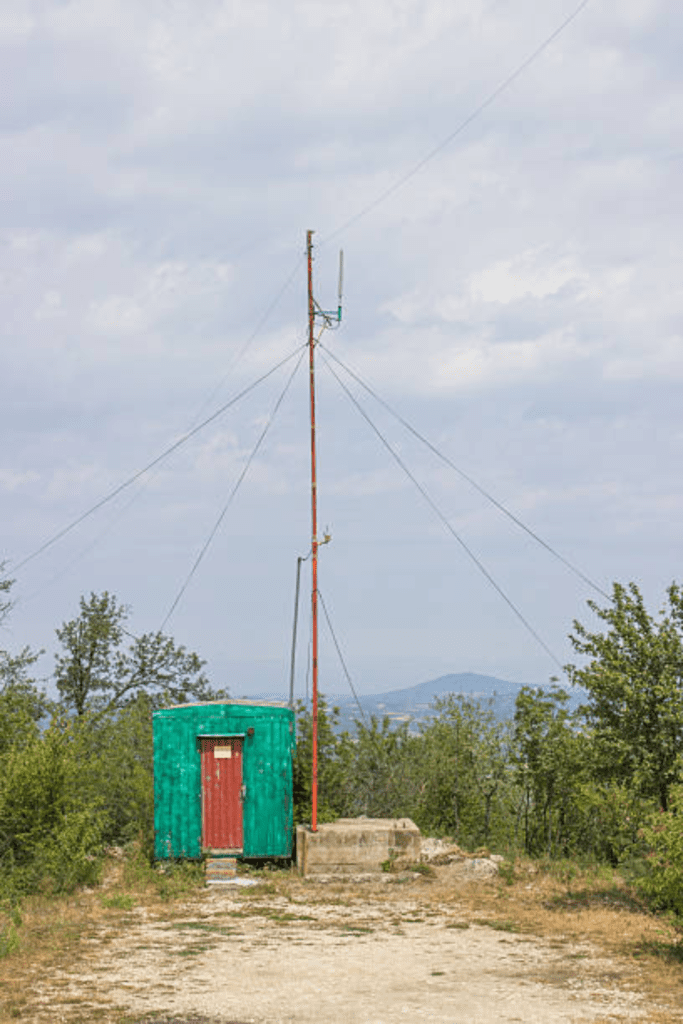
Must-Have Equipment for Effective Communication
When it comes to ham radio gear for disaster communication, certain equipment is essential for ensuring effective communication during emergencies. Some must-have items include:
- Transceiver: This is the heart of your ham radio station, allowing you to both transmit and receive signals.
- Antenna: A good antenna is crucial for optimizing signal transmission and reception.
- Power Source: In disasters, reliable power sources like batteries or generators are essential for keeping your communication equipment operational.
By having these key pieces of equipment, you can set up a functional communication system even in the most challenging situations.
Importance of VHF/UHF Band Radios
VHF (Very High Frequency) and UHF (Ultra High Frequency) band radios are commonly used in ham radio communication for several reasons:
- Line-of-Sight Communication: VHF/UHF radios are suitable for shorter ranges due to their ability to communicate through line-of-sight.
- Local Area Coverage: These radios are effective for local communication within a limited geographic area, making them valuable in disaster scenarios.
- Ease of Use: VHF/UHF band radios are user-friendly and often the choice for beginners in the ham radio community.
Having VHF/UHF band radios in your gear ensures reliable and convenient communication over shorter distances when needed the most.
The ABBREE SMA-Female Ham Radio Antenna
The ABBREE SMA-Female Ham Radio Antenna is an exceptional choice for enhancing your communication capabilities with its impressive VHF/UHF 18.8-inch high gain design. Operating at 144/430MHz, this foldable CS tactical antenna ensures superior performance and extended range, making it perfect for both amateur and professional radio users. Compatible with popular models like the Baofeng UV-5R, BF-F8HP, 5RM, K5PLUS, UV-21R, AR-152, and GMRS radios, this versatile antenna is an essential accessory for anyone looking to boost their signal strength and clarity.
Whether you are in the field, on a mission, or simply enjoying a hobby, the ABBREE antenna provides reliable and robust communication, making it an indispensable tool for all your radio needs.
CLICK HERE TO GET YOUR HAM RADIO ANTENNA
Significance of High Frequency (HF) Radios
High Frequency (HF) radios play a crucial role in disaster communication for the following reasons:
- Long-Distance Communication: HF radios can transmit signals over long distances, making them essential for reaching distant locations or emergency services.
- Skywave Propagation: HF signals can bounce off the ionosphere, allowing for communication beyond the line of sight, which is useful when traditional methods fail.
- Emergency Communication Networks: HF bands are often used for emergency communications and can be vital during natural disasters when other forms of communication are disrupted.
Including HF radios in your ham radio setup enhances your ability to establish communication over extended distances, increasing your chances of getting help or reaching out to others in need during emergencies.
Choosing the Right Ham Radio Equipment
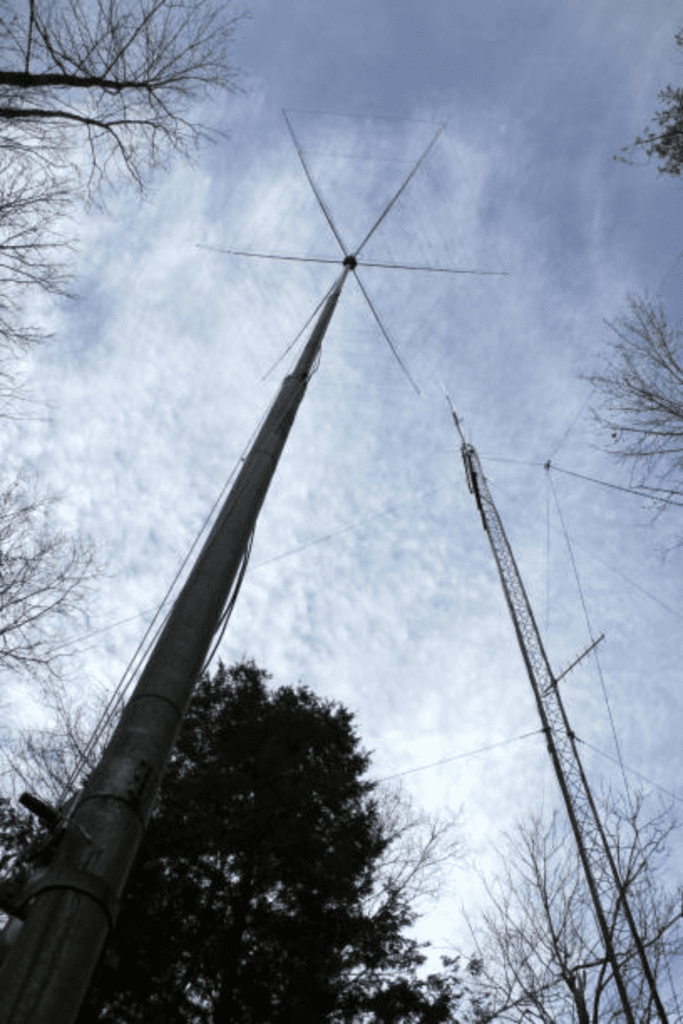
Understanding Different Types of Ham Radios
When it comes to selecting the right ham radio equipment, understanding the different types of radios available is crucial. The two main categories of ham radios are handheld transceivers (HTs) and mobile/base station transceivers.
HTs are portable and compact, ideal for outdoor activities, while mobile/base station radios are more powerful and offer greater range, but are less portable. Additionally, ham radios can operate on different frequency bands such as very high frequency (VHF), ultra high frequency (UHF), and high frequency (HF), each with its own advantages and use cases.
Factors to Consider When Selecting Ham Radio Gear
Several factors should be considered when choosing ham radio equipment. These include:
- Frequency Band: Determine the frequency bands you plan to operate on based on your communication needs.
- Power Output: Consider the power output of the radio to ensure it meets your required range and transmission capabilities.
- Mode of Operation: Decide whether you need a radio for voice communication, digital modes, or a combination of both.
- Durability and Build Quality: Choose a radio that is robust and durable, especially if you plan to use it in challenging environments.
- Budget: Set a budget that aligns with your needs and research radios that offer the best features within your price range.
Recommended Brands and Models by Experienced Operators
Experienced ham radio operators often have preferred brands and models based on reliability, performance, and features. Some popular and recommended brands in the ham radio community include:
- Yaesu: Known for their reliability and diverse range of products from beginner to advanced levels.
- Icom: Renowned for its quality construction and innovative technology in the ham radio market.
- Kenwood: Trusted for its long-standing reputation in producing high-quality transceivers for various applications.
- Baofeng: Ideal for beginners due to its affordability and basic functionality.
By considering these factors and exploring recommended brands, you can make an informed decision when choosing the right ham radio equipment for your communication needs.
Maintenance and Operation of Ham Radio Aerials
Proper Care and Maintenance of Antennas
Proper care and maintenance of ham radio aerials are essential to ensure their longevity and optimal performance. Here are some key practices to consider:
- Regular Inspections: Check for any signs of wear and tear, loose connections, or damage to the antennas.
- Weather Protection: Shield the antennas from extreme weather conditions using appropriate coverings or protective materials.
- Cleaning: Keep the antennas clean from dirt, debris, and bird droppings as they can affect signal transmission.
- Grounding: Ensure proper grounding to protect the antennas from lightning strikes and static buildup.
Ensuring Optimal Performance of Ham Radio Aerials
To maximize the performance of your ham radio aerials, consider the following tips:
- Proper Installation: Install the antennas at the optimal height and angle for better signal transmission.
- Tuning: Regularly tune the antennas to the desired frequency range for clear communication.
- Antenna Matching: Use impedance matching techniques to ensure that the antennas work efficiently with the radio equipment.
- Avoiding Interference: Position the antennas away from sources of interference such as power lines, electronic devices, or metal structures.
Tips for Effective Operation and Troubleshooting
Efficient operation and troubleshooting of ham radio aerials can be critical during emergency situations. Here are some practical tips:
- Regular Testing: Conduct periodic tests to ensure the antennas are functioning correctly.
- Signal Strength Monitoring: Monitor the signal strength to gauge the effectiveness of the aerial setup.
- Backup Plans: Have alternative communication methods ready in case of antenna failure.
- Consulting Experts: Seek advice from experienced ham radio operators or technicians for complex troubleshooting issues.
Integration of Ham Radio Aerials in Survival Preparedness
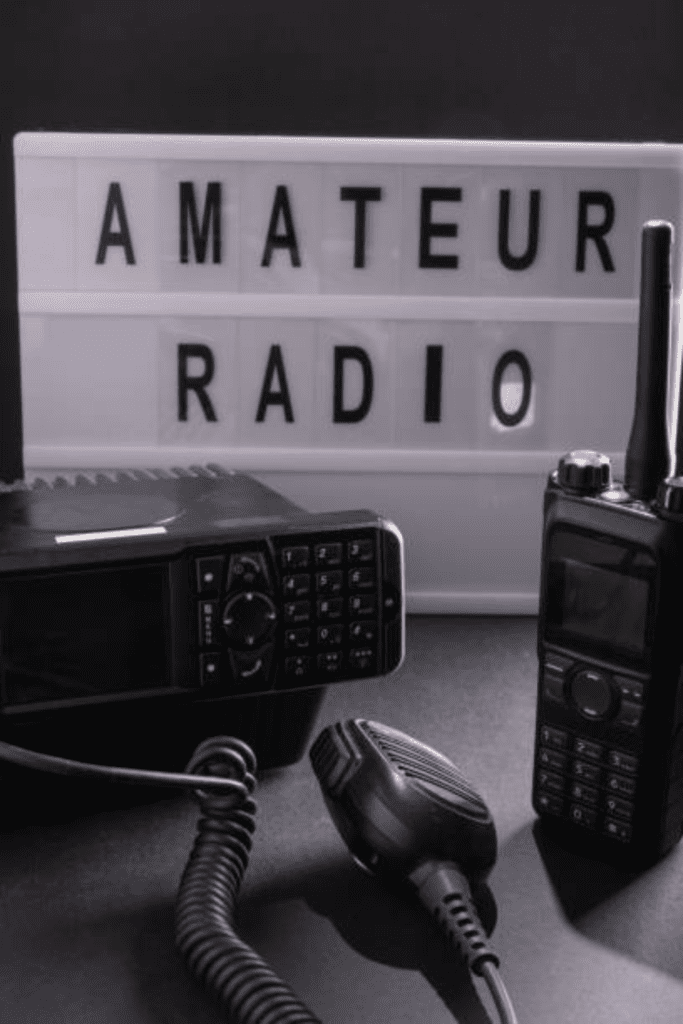
Incorporating Aerial Installation in Emergency Planning
Incorporating ham radio aerial installation in emergency planning is crucial for ensuring effective communication in times of crisis. By including the setup of aerials in emergency protocols, you can expedite communication establishment during disasters. Here are some key points to consider:
- Assess potential installation locations for aerials in advance.
- Have a detailed plan for erecting aerials quickly in emergency situations.
- Ensure all necessary tools and equipment for aerial installation are readily available in your emergency kit.
Role of Aerials in Long-Term Survival Strategies
Ham radio aerials play a pivotal role in long-term survival strategies by providing a reliable communication network for extended periods. Incorporating aerials into your survival strategy ensures:
- Continuous communication capabilities for exchanging vital information.
- Enhanced coordination with emergency services or other survival groups.
- Maintenance of morale and mental well-being through regular contact with the outside world.
Building a Comprehensive Communication System for Survival Scenarios
Building a comprehensive communication system for survival scenarios involves more than just setting up aerials; it requires a well-thought-out approach. To create an effective system:
- Integrate ham radio aerials with other communication devices like handheld radios.
- Establish communication protocols and frequency plans for various types of emergencies.
- Conduct regular drills and exercises to practice using the communication system in realistic scenarios.
Commitment to Preparedness and Communication
By incorporating ham radio aerials into their survival communication strategies, individuals demonstrate a commitment to preparedness and effective communication. These antennas serve as lifelines during emergencies, enabling individuals to establish contact with others, seek help, and coordinate rescue efforts. The dedication to maintaining and operating ham radio aerials reflects a proactive approach to safeguarding communication channels in times of need.
Empowering Long-Term Survival Strategies
Ham radio aerials play a pivotal role in empowering long-term survival strategies by enabling individuals to build robust communication systems that can withstand various challenges. Through the integration of aerial installation in emergency planning and the development of comprehensive communication networks, individuals enhance their resilience and capacity to communicate effectively in prolonged survival scenarios. By prioritizing the role of ham radio aerials, individuals equip themselves with essential tools for enduring and thriving in adverse conditions.
In essence, ham radio aerials serve as indispensable assets for individuals seeking to fortify their communication capabilities and readiness for unexpected events. By recognizing the benefits of these antennas, committing to their maintenance and operation, and integrating them into a holistic survival communication framework, individuals can enhance their preparedness and connectivity in the face of adversity. Embracing ham radio aerials is not just a choice; it is a strategic decision that can make a profound difference in ensuring communication resilience and survival when it matters most.
Conclusion
In conclusion, the significance of ham radio aerials in survival communication cannot be overstated. The ability of these antennas to enhance communication range and ensure reliable communication in emergency situations is crucial for individuals during disasters or when conventional communication methods fail. By embracing the power of ham radio aerials, individuals can significantly boost their chances of staying connected and informed in critical situations.
Resources: Here are some helpful resources for further information.
- AM Radio’s Role In the Emergency Alert System – By National Association of Broadcasters
- What Is Ham Radio? – By ARRL
- Ham Radio Outlet – By Ham Radio Outlet
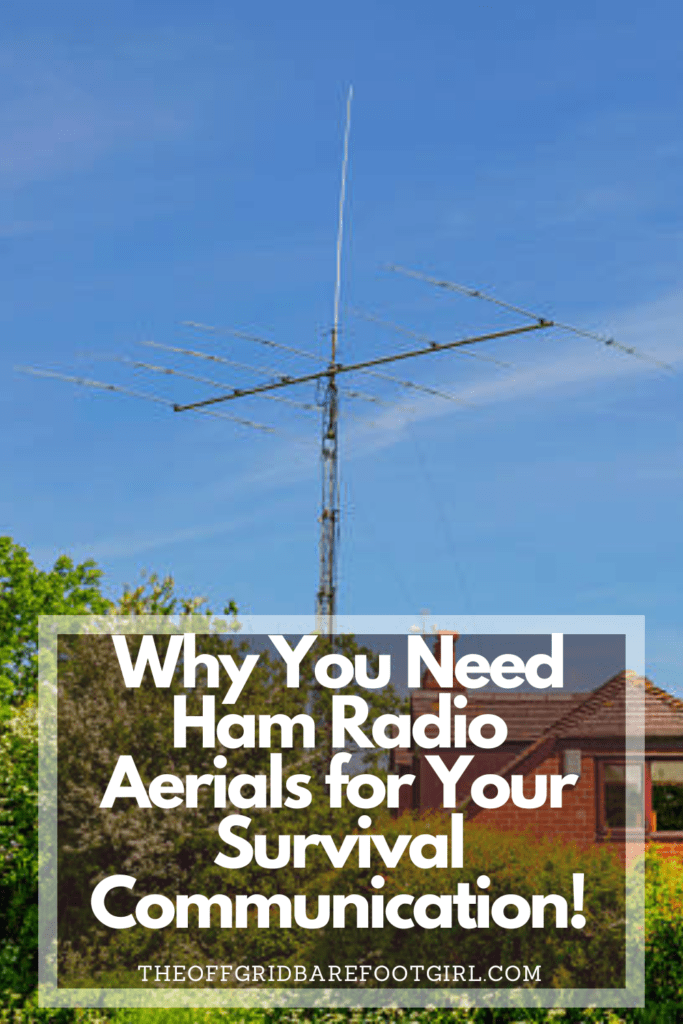
Frequently Asked Questions
1. What are the key benefits of using ham radio aerials for survival communication?
Ham radio aerials provide several critical benefits in survival situations. They offer reliable communication independent of traditional networks, can transmit over long distances, and are highly adaptable to various environments. These aerials ensure you can stay connected with emergency services, coordinate with fellow survivors, and receive important updates even when cell towers and internet services are down.
2. How do ham radio aerials differ from other types of antennas?
Ham radio aerials are specifically designed for amateur radio frequencies, providing optimal performance for VHF and UHF bands. They are often more robust and capable of long-distance communication compared to standard antennas. Additionally, ham radio aerials can be tailored for specific frequencies and conditions, making them versatile tools for a range of survival scenarios.
3. Do I need a license to use a ham radio with an aerial, and how difficult is it to obtain one?
Yes, you need a license to legally operate a ham radio. Obtaining a license involves passing a test that covers basic electronic theory, operating procedures, and regulations. While it requires some study, there are numerous resources and guides available to help you prepare, and many people find the process straightforward and rewarding.
4. Can I use a ham radio aerial for both receiving and transmitting signals?
Absolutely. Ham radio aerials are designed to both receive and transmit signals, making them highly effective for two-way communication. This dual capability ensures that you can not only stay informed by receiving updates but also reach out to others, which is crucial in coordinating efforts during emergencies or survival situations.
Summary
I hope I have inspired you to obtain your ham radio license with these helpful tips and products. Here are some other links you may be interested in reading!
How to Shop the Amish Market: Scoring Big Savings!
Survive the Peaks: The Best Avalanche Gear on the Market!
Bug In and Survive a Grid Down: Survival Training Course!
Bugout Bags and Survival Training Course with Grid Down Consulting!
Get These Vital Emergency Survival Equipment Now!
Bartering: How To Negotiate Commodities with Astonishing Results!
Warning: Why You Need Whole Home Water Purification Now!
How to Design Off Grid Power Systems for Your Homestead
How Many Watts Does a Fridge Use? Energy Efficient Guide
The Best States for Off Grid Living: Unplugged and Thriving
Composting Toilet Systems Are Surging: Ditch Your Septic Tank Now!
Are Greywater Tanks the Key to Sustainable Living? Find Out Now!
How to Live Off-Grid: 11 Tips to Survive and Thrive!
Are Survival Food Kits Worth It? The Truth Revealed!
Do You Really Need Faraday Bags? The Shocking Truth Revealed!
The Best Doomsday Preppers Blogs to Follow Now Before SHTF!
The Ultimate Camping Gear Checklist: Everything You Need for an Adventure
The Ultimate Spring Cleaning House Checklist: Deep Clean with Me!
How Supporting Farmer’s Markets Makes a Difference
Eco-Friendly Christmas: How to Have an Eco-Friendly Christmas
How to Winterize Your Home: Prepare for Jack Frost’s Wrath!
Proven Hacks to Make Your Christmas Tree Survive
What Thanksgiving Teaches Us About Survival
Homeless Survival Hacks to Overcome Adversity
More Self-Sufficiency Posts!
Is Your Car Ready for Winter? The Ultimate Checklist for Your Winter Emergency Car Kit
What The Walking Dead Can Teach Us About Survival: The Walking Dead Survival Tactics
Get Lockdown Ready: Best Dollar Tree Survival Items
Understanding Water Purification Methods for Survival: Best Practices Explained
Thirsty for Survival: Expert Guide to Emergency Water Prep Tactics
The Benefits of Urban Homesteading: Revolutionize Your City Life
Practical Pantry Prepper: Essential Guide
How to Grocery Shop Once a Month
What Should Be in A 72-Hour Survival Kit?
Buy or Die: Prepper Items You Need Now
How to Learn 58 Self-Sufficient Skills Right Now
Road to Self-Sufficiency: How to Start Your Journey
If you were encouraged by this post, I invite you to check out my FREE Printables Page for fun free printables, planners, and charts.
ENTER MY FREE Printables Page HERE
Blessings,
The Off Grid Barefoot Girl

